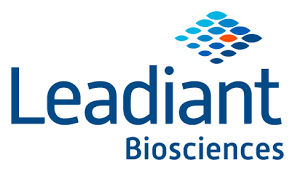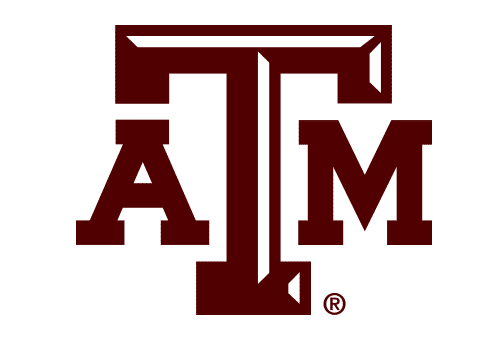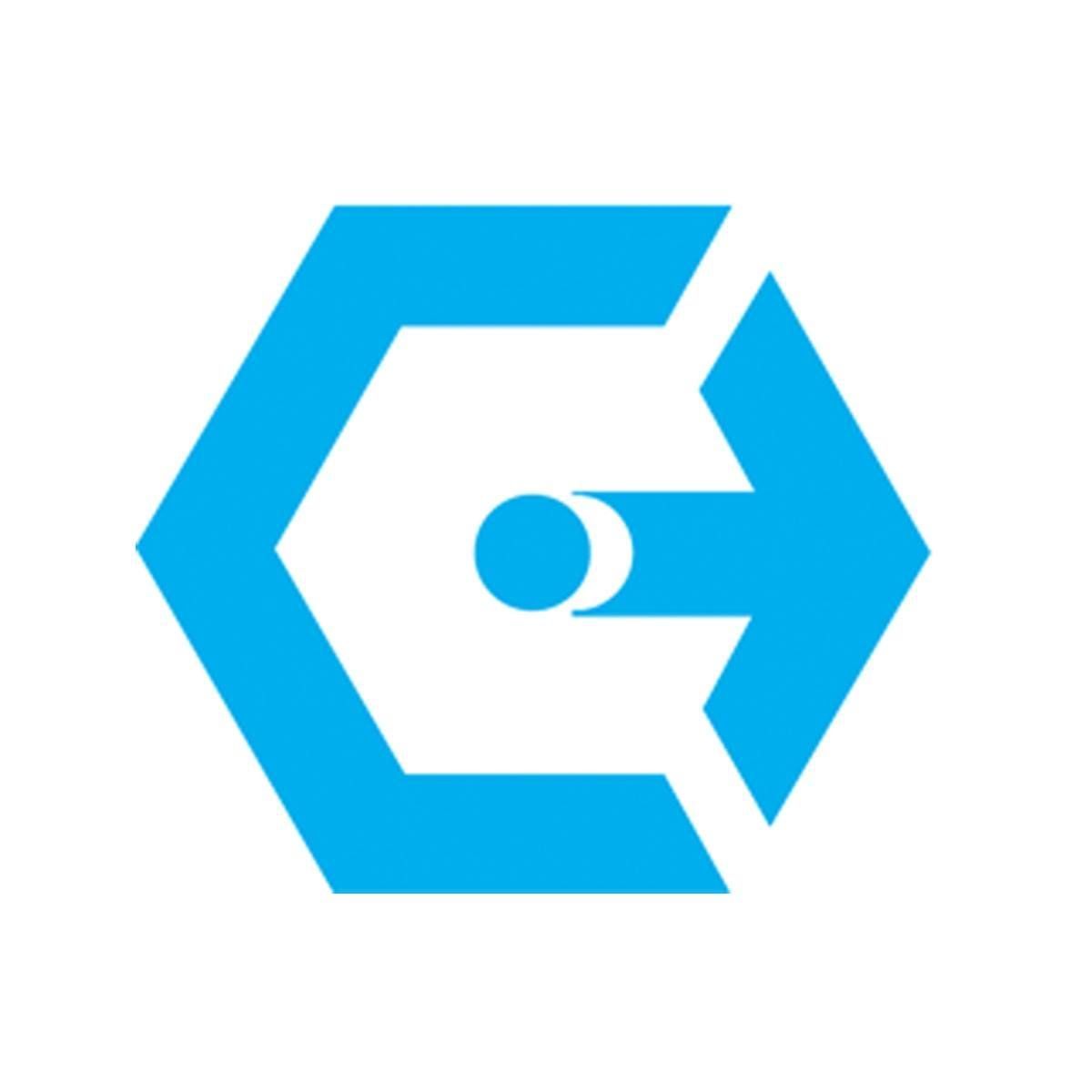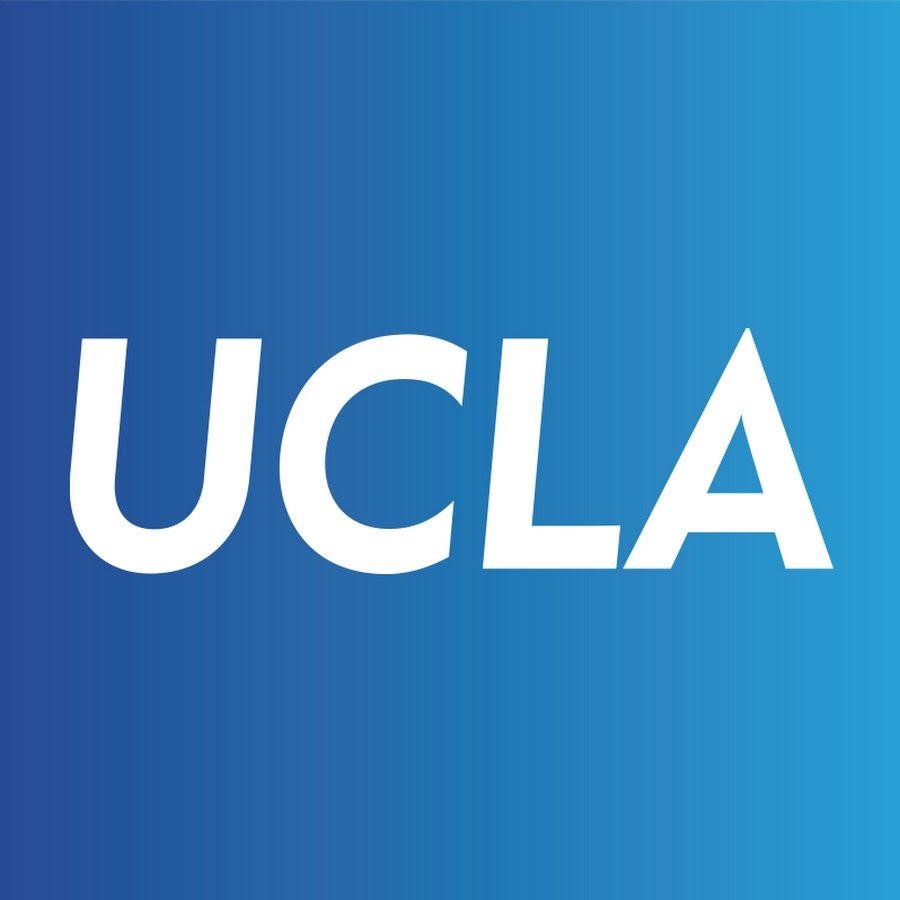预约演示
更新于:2025-05-07
Adenosine
更新于:2025-05-07
基本信息
别名 腺苷 |
简介- |
关联
4
项与 Adenosine 相关的药物作用机制 腺苷脱氨酶替代品 |
在研机构 |
在研适应症 |
非在研适应症- |
最高研发阶段批准上市 |
首次获批国家/地区 美国 |
首次获批日期2018-10-05 |
作用机制 腺苷抑制剂 |
在研适应症 |
非在研适应症- |
最高研发阶段临床前 |
首次获批国家/地区- |
首次获批日期1800-01-20 |
作用机制 腺苷抑制剂 |
在研机构- |
在研适应症- |
非在研适应症 |
最高研发阶段撤市 |
首次获批国家/地区 美国 |
首次获批日期1990-03-21 |
7
项与 Adenosine 相关的临床试验NCT03878069
Single Arm, Open-Label, Multicenter, Registry Study of Revcovi (Elapegademase-lvlr) Treatment in ADA-SCID Patients Requiring Enzyme Replacement Therapy
This registry study is being conducted in patients with adenosine deaminase severe combined immune deficiency (ADA-SCID) who require enzyme replacement therapy (ERT) treatment with Revcovi. Data on safety and on measures of efficacy are collected.
开始日期2019-09-30 |
申办/合作机构 |
NCT02999984
Efficacy and Safety of Cryopreserved Formulation of Autologous CD34+ Hematopoietic Stem Cells Transduced Ex Vivo With Elongation Factor 1 Alpha Shortened (EFS) Lentiviral Vector Encoding for Human ADA Gene in Subjects With Severe Combined Immunodeficiency Due to ADA Deficiency
This is a prospective, non-randomized, single-cohort, longitudinal, single-center, clinical study designed to assess the efficacy and safety of a cryopreserved formulation of OTL-101 (autologous CD34+ hematopoietic stem/progenitor cells transduced ex vivo with EFS (Elongation Factor 1α Short form) Lentiviral Vector (LV) encoding for the human ADA gene) administered to ADA-SCID subjects between the ages of 30 days and 17 years of age, who are not eligible for an Human Leukocyte Antigen (HLA) matched sibling/family donor and meeting the inclusion/exclusion criteria. The OTL-101 product is infused after a minimal interval of at least 24 hours following the completion of reduced intensity conditioning. For subjects who successfully receive the OTL-101 product, pegademase bovine (PEG-ADA) Enzyme Replacement Therapy (ERT) is discontinued at Day+30 (-3/+15) after the transplant. After their discharge from hospital, the subjects will be seen at regular intervals to review their history, perform examinations and draw blood samples to assess immunity and safety.
开始日期2016-12-16 |
申办/合作机构 |
JPRN-JapicCTI-163204
Multicenter, open-label, uncontrolled clinical study of STM-279 in patients with adenosine deaminase (ADA) deficiency (Phase III clinical study)
开始日期2016-03-02 |
申办/合作机构 |
100 项与 Adenosine 相关的临床结果
登录后查看更多信息
100 项与 Adenosine 相关的转化医学
登录后查看更多信息
0 项与 Adenosine 相关的专利(医药)
登录后查看更多信息
1,618
项与 Adenosine 相关的文献(医药)2025-12-01·Inflammation Research
Inflammatory pain and electroacupuncture: how the P2X3 receptor can help modulate inflammation—a review of current literature
Review
作者: Soares, Adinei Abadio ; da Silva, Keroli Eloiza Tessaro ; Ecco, Jardel Cristiano ; Resende E Silva, Débora Tavares ; Sousa Silva, Guilherme Vinício ; Ansolin, Vinicius
2025-08-01·Biomaterials
Immunity/metabolism dual-regulation via an acidity-triggered bioorthogonal assembly nanoplatform enhances glioblastoma immunotherapy by targeting CXCL12/CXCR4 and adenosine-A2AR pathways
Article
作者: Jiang, Xinqing ; Lin, Wanxian ; Wei, Xinhua ; Li, Tao ; Yang, Ruimeng ; Zhao, Yandong ; Lai, Shengsheng ; Xie, Kunfeng ; Yuan, Youyong ; Wei, Ruili ; Li, Jiamin
2025-07-01·Neural Regeneration Research
Prolonged intermittent theta burst stimulation restores the balance between A2AR- and A1R-mediated adenosine signaling in the 6-hydroxidopamine model of Parkinson’s disease
Article
作者: Ninkovic, Milica ; Jovanovic, Milica Zeljkovic ; Nedeljkovic, Nadezda ; Stevanovic, Ivana ; Ilic, Tihomir V. ; Stanojevic, Jelena ; Dragic, Milorad
8
项与 Adenosine 相关的新闻(医药)2024-05-04
·同写意
本次活动以“面向临床 成就产业”为主题,设一场主论坛和四场主题论坛,从技术创新、供应链、临床研究、审评审批、资本推动等多个角度推动细胞药物产品开发,加速细胞制药产业化进程。肿瘤组织中的淋巴细胞被称为肿瘤浸润淋巴细胞(TIL),它们在肿瘤疾病的控制和治疗中发挥着关键作用。自从1987年首次发现培养的TIL能够比外周血培养的T细胞更有效地杀死肿瘤细胞以来,经过多年的研究,已经证实培养的TILs能够成功治愈临床黑色素瘤患者。然而,尽管TIL免疫疗法已被广泛接受用于治疗黑色素瘤,但其不确定的临床反应意味着TILS在治疗实体瘤中的疗效仍受到质疑。目前,关于TIL免疫疗法治疗实体肿瘤的疗效仍存在两种相互矛盾的意见。第一个是,即使TIL作用强大,但在激活后经历1000倍的扩增后,一些报告表明,TIL免疫治疗不能可靠地产生治疗实体瘤的有效反应。第二个是,测定TIL对不同类型肿瘤细胞的细胞毒性发现产生可变的结果。因此,这里提出了关于实体瘤中TIL疗效的三个问题,对于这三个问题的回答有助于我们更好地制定过继TIL免疫治疗的策略。1为什么TIL在实体瘤治疗中有不同的疗效?在使用TIL治疗的首次人体试验中,20名转移性黑色素瘤患者中有11名出现了客观反应,有5个完全响应(CR),在这些早期研究中反应的中位持续时间为4个月。根据2021美国临床肿瘤学学会(ASCO)年会上公布的临床试验结果,经过30多年的研发,TIL在治疗复发性/难治性黑色素瘤方面显示出良好的总体缓解率(38%)。通过研究早期TIL对实体瘤自体肿瘤细胞的细胞毒性机制,发现TIL在治疗实体瘤患者中具有不同的疗效。这可以归咎于三方面的原因:TIL沉默、来自异质性肿瘤抗原的异质性免疫反应以及TIL对实体肿瘤的穿透。01TIL沉默在早期的研究中,发现实体瘤组织中存在处于静止状态的TIL。这些TIL含有活化的T细胞表面标志物,如人类白细胞抗原-DR同种型(HLA-DR)和IL-2受体,但这些细胞对肿瘤细胞没有强烈的细胞毒性。经过长时间的研究,发现静止TIL有两个主要因素影响疗效:内部因素和外部因素。静止T淋巴细胞是一组没有自发增殖和低代谢率的T细胞。在使淋巴细胞沉默的过程中,静止减少了维持大量淋巴细胞的资源消耗。在宿主的一生中,只有一小部分天然淋巴细胞会被抗原克隆选择。根据对静止淋巴细胞的观察,已经提出了产生淋巴细胞静止的六种机制:(1)胸腺阴性选择,(2)外周克隆缺失,(3)外周诱导的无能,(4)T细胞忽视,(5)T细胞抑制,和(6)T细胞衰老(耗竭)。从实体瘤获得的静止淋巴细胞是由六种机制中的一种或多种因素引起的。除了这些内部因素,外部的肿瘤微环境(TME)可以在TIL培养期间维持TIL静止并影响TIL细胞毒性。TME由三个组成部分组成:(1)称为细胞外基质(ECM)的组织,包括上皮、基底和内皮;(2) 调节细胞,包括肿瘤相关巨噬细胞(TAM)、肿瘤相关中性粒细胞-2(TAN-2)、肿瘤相关成纤维细胞(CAF)和髓源性抑制细胞(MDSC);以及(3)通过释放细胞外信号、促进肿瘤血管生成、促进和影响肿瘤细胞生长的信号分子。所有ECM均产生TGF-β,其阻断TIL功能,包括抑制TIL生长和细胞毒性。此外,一些信号分子可以通过释放细胞外信号通路影响TIL的生长,例如腺苷(ADO)和吲哚2,3-二氧合酶(IDO)。02异质性肿瘤抗原的异质性免疫反应TIL对自体肿瘤细胞产生的反应,包括对同源抗原的自我耐受、异质反应以及TIL对自体肿瘤的异质性网络。人类肿瘤抗原可以分为两种主要类型:肿瘤相关抗原(TAA)和肿瘤特异性抗原(TSA)。TAA包括癌-睾丸(CT)抗原、分化抗原(DA)和癌胚抗原(CEA)。TSA包括新抗原和肿瘤病毒抗原,如HBV、EBV和HPV E6/E7蛋白。CT抗原、分化抗原和癌胚抗原在胚胎发育阶段早期产生,并在成人免疫系统完全发育时消失,因此自我耐受可能导致针对这些抗原的静止TIL。由致癌过程中的遗传不稳定性可以产生新抗原,新抗原也可以由病毒感染诱导,例如选择性剪接和基因重排。有两种新抗原:共享新抗原和个性化新抗原。共享新抗原是指在不同癌症患者中常见且不存在于正常基因组中的突变抗原,具有高免疫原性筛选潜力,目前用作广谱治疗性癌症疫苗或过继免疫治疗。个性化新抗原指的是不同患者的变异抗原。因此,个性化的新抗原可以针对每个患者进行特异性靶向治疗,可用于设计个性化的免疫治疗。不同类型的新抗原和不同数量的TAA可存在于不同个体的同一肿瘤中,从而产生个体免疫反应,因此TIL给药应发展为免疫治疗的个体化设计。基于个体基因组数据等个性化信息,个性化TIL治疗可以提高抗肿瘤作用的强度和持久性,提高生存率和生活质量,并最终改善患者的癌症治疗结果。03TIL对肿瘤组织的穿透TIL细胞表面的分子完整性对于实体肿瘤的过继TIL免疫治疗是非常重要的。研究显示,使用温和的酶消化(仅用胶原酶IV消化)从实体瘤中分离和培养TIL,结果显示65%的TIL增殖超过1000倍,治疗实体瘤的临床试验显示出更好的治疗结果。另一方面, TIL进入肿瘤组织依赖于特定的运动能力,如滚动、粘附、外渗和趋化性。现在,CXCR2、CCR4等趋化因子受体或配体已被用于修饰增强T细胞向肿瘤部位的运输。这些研究表明,未来的联合治疗可能会增强过继转移T细胞在患者体内的疗效和归巢能力。2如何使TIL在实体瘤治疗中具有稳定的疗效?01清除抑制因素如前所述,静止TIL受内部和外部因素影响。为了克服这些抑制因素,已经研究了一些清除方法,例如在TIL培养期间去除自体肿瘤细胞,以获得更好的细胞毒性增强反应。此外,一些可以阻断内部和外部因素的药物,如PD-1抗体阻断剂。02增强对肿瘤细胞的免疫反应为了增加对肿瘤异质抗原的免疫反应,一些临床实验将肿瘤新抗原修饰到T细胞。另一方面,通过研究TIL与具有不同肿瘤抗原网络的反应,发现了一些实体瘤TIL细胞中静止基因的表达,如Tob-1、KLF2、TGFB1和ERF,对这些分子的调控有助于增强对肿瘤细胞的反应。03增加TIL对肿瘤细胞的接触为了提高TIL与肿瘤细胞的有效接触,一方面可以在温和的消化条件下修改配方,如胶原酶IV,以保持实体瘤中T细胞的完整性。另一方面,可以通过将培养的TIL直接注射到患者的肿瘤部位来增加TIL与肿瘤细胞的接触。研究表明,在对68例卵巢癌和其他女性恶性肿瘤患者的分析中,局部注射和静脉注射TIL先比,局部注射组的抗癌效果高于静脉注射组。3未来TIL治疗的方向在哪儿?现在,越来越多的T细胞治疗方法已被用于实体瘤的治疗。此外,随着基因组学和蛋白质组学发展到临床免疫治疗,越来越多的靶向药物及其机制被发现用于治疗肿瘤。现在正是开发针对实体瘤个性化TIL疗法的好时机。首先,单细胞技术已经成熟,并鉴定出一些与TIL沉默相关的基因。其次,在临床试验中从不同的临床反应中确定了某些基因中的不同SNP。第三,人们已经使用人工智能来分析TIL以解决实体癌的临床管理。总之,在单细胞技术和人工智能网络的临床基因组学应用之后,个性化T细胞治疗呼之欲出。一种好的免疫疗法应该具有疗效高、副作用少、对每个肿瘤患者经济成本低的特点。基于这些考虑,未来免疫治疗的这些发展需要在最佳细胞培养和正确的临床治疗中为每个患者开发负担得起的治疗、可耐受的副作用和更优越的疗效。因此,过继性T细胞免疫治疗的所有努力都应集中于在实验室中建立最佳的T细胞培养物,在临床中选择正确的给药模式,考虑可负担性,并提高每个患者的可用性。参考文献:1.Why
do tumor-infiltrating lymphocytes have variable efficacy in the treatment of
solid tumors? Front Immunol.2022 Oct 21;13:973881更多优质内容,欢迎关注↓↓↓
免疫疗法ASCO会议细胞疗法临床结果
2024-04-12
Portage Biotech said in January that it was halting development of its iNKT programs.
Portage Biotech is putting the clamps on existing work to save cash as it prioritizes a hunt for strategic alternatives.
The company said Friday that after a review of the financing market and the amount of spending necessary to advance its pipeline, the search for strategic alternatives would commence. In the meantime, Portage is halting enrollment in a clinical trial testing both its adenosine 2A inhibitor PORT-6 and its adenosine 2B inhibitor PORT-7. Portage bought both assets from Tarus Therapeutics less than two years ago.
Portage is considering anything from securing partners for its assets to a merger, sale or a full wind-down of the company. The biotech has no timetable for finding a path forward.
About three months ago, Portage said it was all in on prioritizing development of its adenosine inhibitors, electing to pause further development of an iNKT program. The biotech had been expecting to provide interim data from a phase 1a trial testing PORT-6 in patients with solid tumors at this year’s American Society of Clinical Oncology annual meeting in June, with final data teased for November.
But the company had little money to work with, entering 2024 with just $5.3 million in cash on hand, according to a full-year earnings report from February. Still, Portage affirmed at the time that it intended to press ahead with its adenosine work.
Those assets were acquired from Tarus back in July 2022, with Portage handing over 2.4 million shares and taking on $3 million in liabilities. In addition to PORT-6 and PORT-7, Portage took hold of a dual adenosine inhibitor, PORT-8, and a preclinical candidate to treat gastrointestinal tumors, dubbed PORT-9. But neither PORT-8 or PORT-9 are still in development, according to Portage’s pipeline.

并购临床1期ASCO会议
2024-03-25
·同写意
据估计,全球约有3.5亿患者受罕见病影响,是艾滋病和癌症患者总数的两倍多。尽管当前罕见病研究取得重大进展,使得更深入理解其分子机制,同时也通过立法保证了监管和经济激励,从而推动罕见病特定疗法的开发。然而,将罕见病知识转化为疗法的速度远远落后于这些知识的生成速度。解决这一转化差距是一项多方面的挑战,其关键方面之一是选择最佳的治疗方式。来自比利时罕见病联盟的Erik Tambuyzer和Marco Prunotto研究团队在期刊《Nature Reviews Drug Discovery》上发表了题为“Therapies for rare diseases: therapeutic modalities, progress and challenges ahead”的文章,详细探讨了罕见病的主要治疗方式的技术基础和其适用性,包括小分子药物、抗体药物、蛋白质替代疗法、寡核苷酸疗法、基因和细胞疗法,以及药物再利用。对于每种治疗方式,作者比较了不同模式下的分子靶向机制(图1),描述了基于该平台的药物开发的临床进展,并分析了其作为罕见病疗法开发平台的优缺点。希望本文能为罕见病领域的药物发现提供入门介绍,并推动科学进步转化为新型疗法。图1 不同治疗模式的特点和监管批准数据(图片来源:Tambuyzer E et al, Nat Rev Drug Discov, 2020)1小分子药物小分子药物因多样的给药途径、可控的剂量、高稳定性、合成规模大以及相对较低的成本等优势,是罕见病药物研发中最成熟的药物平台。罕见病的小分子药物的发现通常来源于对模式细胞系的大规模筛选。在将候选小分子筛选转化用于临床疗法时,建立高通量筛选是局限性之一。近期,包括诱导多能干细胞(induced pluripotent stem cells, iPS)、基因编辑技术(CRISPR-Cas systems)和类器官(Organoids)在内的几项最新发展有效提升了筛选通量及效率。理论上,可以从患者的皮肤活检样本中建立iPS细胞,并分化为表达疾病表型特征的细胞类型。类器官3D培养更能模拟组织结构和功能,特别是当需要针对特定突变的药物时,它是筛选小分子药物的绝佳模型。模式生物筛选也正在成为重要的遗传和化学发现平台,特别是对于可能改变疾病表型的小分子药物。这些筛选还考虑到药物进入细胞中的摄取和毒性因素。CRISPR-Cas9基因编辑技术和转基因技术的出现使得可以引入特定的突变。同时,在几种模式生物中进行验证可以加速潜在疗法向临床的转化。对于囊性纤维化,根据对CFTR基因中潜在突变的了解,通过细胞筛选可获得治疗性小分子药物。当前FDA已批准两种抑制缺陷酶底物生物合成的小分子疗法(用于戈谢病的miglustat和eliglustat)和一种作为伴侣蛋白稳定并恢复突变酶功能的小分子疗法(用于法布里病的migalastat),还有其他候选药物正在进行临床试验,包括用于治疗法布里病的CNS穿透性化合物ibiglustat。在杜氏肌营养不良(duchenne muscular dystrophy, DMD)患者中,抗肌萎缩蛋白的编码基因存在终止密码子突变,小分子ataluren能够在小鼠模型中促进终止密码子通读,目前已在欧盟获得批准。小分子药物也可用于提升蛋白质水平,如促进肌营养相关蛋白表达,在动物模型中也可以减缓DMD。另外,几种处理下游效应(如炎症和纤维化)的小分子药物也在DMD临床试验中显示出疗效,可以联合使用。最后,目前正在开发用于LSDs的小分子蛋白稳态调节剂,可增强内源性细胞对应激的反应,并上调HSP70(heat shock protein 70)以促进蛋白质折叠。小分子药物在药物研发中仍处于前沿地位,其靶向广泛,生产成本合理且可大规模生产。对于罕见病而言,该平台有着丰富的科学、临床和监管经验。对于分子病因不明或有多重因素参与的罕见病,表型筛选也会对发现有效小分子起到正面作用。但同时,找到既具备好的药理学效应和药代动力学效应又能使脱靶效应低的小分子较为艰难,需要经历复杂的优化过程。当然,目前一些已被证明安全的其他药物可以应用于罕见病,随着对罕见病机理研究的深入,类似于靶向不同病因的联合疗法也将成为可能。2抗体药物抗体药物主要通过调节信号通路、募集细胞或蛋白质至特定部位、传递细胞毒素或中和及调节循环因子来发挥作用。单克隆抗体(monoclonal antibody, mAbs)由B淋巴细胞产生,能够在体液免疫反应中识别抗原。mAbs的两个关键特性是对特定抗原的特异性和这种特异性的持续性。针对第一批鼠源性mAbs具有免疫原性和较短的半衰期问题,研究者们设计了人-鼠混合mAbs、人源化小鼠mAbs或人源mAbs来开发有效mAbs治疗药物。另外,抗体工程的进步使得抗体可以以naked mAbs或更小的工程化抗原结合片段(antigen-binding fragments, Fab)的形式生产,帮助提高限定区域(如眼底)的药物浓度,降低全局生物活性,并降低毒性。工程技术还允许生产双特异性抗体(bispecific antibody, BsAb),相比mAbs更有优势,能够直接引导免疫系统靶向肿瘤细胞或同时阻断两个不同的靶点,迄今为止已有2种BsAb获批上市。抗体恒定区(fragment crystallizable, Fc)也可与其他非抗体相关蛋白结构域融合,作为单独的治疗性抗体,或将全长抗体与小分子融合,形成ADCs。Fc融合蛋白具有IgG的优势,能促进体内稳定性,实现特异性治疗,目前已有8种Fc融合蛋白被批准。ADCs利用mAbs的特异性,选择性地将细胞毒性药物递送至肿瘤细胞,从而减少对健康组织的损伤。目前只有少数ADCs被批准用于血液肿瘤,但该领域较为活跃,有超过50种ADCs正在进行临床试验。依库珠单抗(eculizumab)是一种靶向末端补体蛋白C5的mAb,10多年前首次被批准用于治疗阵发性睡眠性血红蛋白尿症(paroxysmal nocturnal hemoglobinuria,PNH),此后又被批准用于非典型溶血性尿毒综合征(atypical haemolytic uraemic syndrome)和重症肌无力(myasthenia gravis)。卡那单抗(canakinumab)最初是为类风湿性关节炎(rheumatoid arthritis)开发的一种靶向关键炎性细胞因子IL-1β的mAb,2009年被重新应用并批准用于治疗cryopyrin相关周期性综合征,该项目临床试验还为批准其用于治疗其他三种与IL-1β相关的罕见周期性发热综合征提供了依据。IL-1β也是利纳西普(rilonacept)的靶点,于2008年被批准用于治疗cryopyrin相关周期性综合征。目前已批准的两种BsAbs中,分别是血友病(hemophilia)治疗药物艾米珠单抗(Emicizumab)和获得性血栓性血小板减少性紫癜(acquired thrombotic thrombocytopenic purpura, ATTP)治疗药物卡普赛珠单抗(caplacizumab)。基于mAb的治疗平台具有高度特异性,脱靶毒性低,稳定性高,有助于降低给药频率。对于获能突变引发的罕见病,已经建立了合适的mAb疗法。然而,mAbs的大尺寸限制了其对组织和细胞的穿透,从而阻碍了对某些理论上理想靶点(如细胞内蛋白)的结合。由于需要在良好生产规范条件下大规模培养哺乳动物细胞并进行大量纯化步骤,因此mAbs的制造成本也非常高。此外,mAbs需要注射给药,因此在制剂阶段需要非常高的无菌标准,并且可能引发注射部位的不良反应。当前mAb平台研发部署较少,但高效、安全地识别和制造mAbs的能力正在“普及”,再加上在生产环节可实现更高的mAb滴度,这大大降低了商品成本。其次,mAbs的廉价生物仿制药进入市场可能有助于重新利用该抗体。3蛋白质替代疗法蛋白质替代疗法,长期以来一直是治疗特定蛋白质功能丧失相关的罕见病的重要基石。较为成功的方向是使用外源补充的酶来替代缺失或者功能缺陷的酶进行治疗—ERT疗法,ERT的研究主要靶向溶酶体酶相关的LSDs。应用于ERT的酶大部分来源于重组蛋白。ERTs通常使用哺乳动物细胞系生产,最常见的是中国仓鼠卵巢(CHO)细胞。与所有重组蛋白疗法一样,从生物反应器发酵液纯化制备的酶是复杂的,需要高度控制,以保持最终产品的生物活性和足够的产量。此外,制造参数(如生物反应器的规模)的变化可能导致最终产品出现特性差异,这可能会被监管机构认为有临床意义。迄今为止,全球已开发并批准了11种不同的重组ERTs,包括戈谢病、法布里病、Hurler-Scheie综合征(黏多糖贮积症Ⅰ型(MPSⅠ))、亨特综合征(MPS Ⅱ)、庞贝病、Maroteaux-Lamy综合征(MPS Ⅵ)、溶酶体酸性脂肪酶缺乏症(沃尔曼病)、巴顿病(神经蜡样质脂褐质沉积症2型)、Morquio A综合征(MPS ⅣA)以及最近的Sly综合征(MPS Ⅶ)和α-甘露糖苷贮积症。在LSDs领域,目前正在为圣菲利柏A综合征(MPS ⅢA)和圣菲利柏B综合征(MPS ⅢB)开发多种ERT。在LSDs领域之外,使用天然(人类和动物)酶的ERTs已被批准用于A1AT增强疗法和与腺苷脱氨酶(adenosine deaminase, ADA)缺乏相关的重症联合性免疫缺陷病(severe combined immunodefiency, SCID),重组ERTs也被批准用于低磷酸酯酶症(FDA和EMA)和苯丙酮尿症(FDA)。在病程的早期(即在重大不可逆器官损伤发生之前),替代酶能够以合适的剂量被输送到合适的组织和细胞,ERT就会非常有效。酶递送是受体介导并具有剂量依赖性,在戈谢病中,酶表面的甘露糖分子有助于酶进入相关细胞类型,即巨噬细胞。然而,对于其他LSDs,如黏多糖病、法布里病等,ERT的开发较为困难,因为病理性底物积聚发生在缺乏或表达低水平甘露糖受体的其他细胞类型中。此外,当酶需要被输送到血管系统服务较少的器官或组织时,需要较高的剂量才能达到正确的治疗效果。而静脉注射ERT对神经病变亚型的神经学表现无效,因为酶体积太大,无法穿过血脑屏障。因此,在一些LSDs试验中正在测试向CNS实现鞘内注射ERT。ERT疗法安全性高,很少有患者出现不良反应。但是可能会引起过敏,从而限制治疗的效果,并且对于受到不可逆器官损伤的重症患者,ERT治疗效果非常差。当前,ERT技术仍存在局限性,包括制造和纯化重组酶的成本,以及建立新产品制造能力所需的时间。4寡核苷酸疗法目前已经开发出几种靶向RNA的方法,其中研究最广泛的是ASOs和siRNAs,寡核苷酸疗法是通过序列特异的碱基配对与RNA靶点结合的合成核酸序列,从而以各种方式影响基因表达。ASOs是单链分子,并通过核糖核酸酶H引发其选择性降解,导致相应蛋白的表达下调。siRNAs属于内源性基因调控机制,为双链结构,通过整合修饰后的化学骨架以增强其药物特性。它们通常会与脂质纳米颗粒或N-乙酰半乳糖胺等载体结合实现肝脏递送。此外,单链RNA阻断剂通过与前体mRNA或mRNA杂交,也有助于基因功能障碍相关的罕见病的治疗,且能够恢复基因功能,而不是只像ASO和siRNA一样起到抑制作用。1998年,第一种获得FDA批准的ASO药物是用于治疗免疫受损患者(包括艾滋病患者)巨细胞病毒视网膜炎的福米韦森(fomivirsen)。虽然福米韦森后来已被撤市,但其他ASO药物也随之出现,例如米泊美生(ASO mipomersen)于2013年被批准用于治疗家族性纯合子高胆固醇血症。寡核苷酸疗法在罕见神经系统疾病中的应用或许最具前景,近年来获得数项开创性批准。其中Patisiran是一种与脂质相结合的siRNA,成为FDA批准的首个siRNA疗法,随后不久FDA批准了ASO药物Inotersen。这两种药物均是通过降解编码TTR的mRNA发挥作用。另外两种RNA阻断型寡核苷酸疗法Nusinersen和Eteplirsen也已被批准用于罕见的神经系统疾病。Nusinersen通过增加SMN2 mRNA转录本中的外显子7包含物发挥作用,从而生成SMN蛋白,已在美国和欧盟获批上市。Eteplirsen旨在校正翻译阅读框并生成缩短但仍具功能的抗肌萎缩蛋白,主要用于治疗DMD。然而Eteplirsen的效果一直存在争议。寡核苷酸疗法具有高度特异性,能够解决传统疗法无法触及的靶标,并且由于全身暴露有限而降低了毒性。这极大扩展了可选目标的数量和类型。由于大多数已知的罕见病是遗传性的,寡核苷酸疗法通过靶向RNA为降低罕见病所引发的较大的发病率和死亡率提供了关键机会。然而,寡核苷酸不易穿过血脑屏障,因此需要采取有创的给药方式(如鞘内或脑室内途径),这仍然是其在CNS疾病临床应用的最大障碍之一。尽管如此,近期获得监管机构批准的成功案例数量可能会推动其针对其他罕见病的研究和开发。例如,靶向亨廷顿蛋白(HTT)mRNA的ASO药物(RG6042),最近已进入临床Ⅲ期试验,希望这能成为针对这种神经退行性疾病的首个疾病修饰疗法。5基因与细胞治疗基因治疗在罕见病中的作用原理主要为两种,一种是表达所需蛋白以弥补特定蛋白质功能丧失,另一种是利用RNA干扰机制抑制基因表达。腺相关病毒(adeno-associated virus, AAV)载体和逆转录病毒(retrovirus)/慢病毒(lentivirus)载体是目前常用于罕见病临床研究的两种基因治疗平台。重组AAV载体可以插入小于5000个碱基的治疗性转基因以进行基因治疗。目前已鉴别出13种AAV血清型,不同的AAV血清型具有不同的组织趋向性。例如,AAV8已在三项临床试验中用于将基因递送至肝脏;AAV9已用于四项神经系统疾病的临床试验中。治疗用的AAV不会将基因整合进人体细胞,保证了安全性,但其会在细胞复制中丢失信息,因此只能用于非分裂(或分裂缓慢)细胞类型的基因治疗。AAV载体具有良好的安全性,在200多项临床试验中没有死亡或致癌记录。在人体内引起的最常见严重不良反应是肝转氨酶水平升高(表明肝损伤),与对AAV衣壳蛋白的免疫反应有关,通常可以通过类固醇治疗来控制。逆转录病毒包含单链RNA基因组,通过逆转录将基因整合到人类基因组中,实现基因组的永久修饰。慢病毒是逆转录病毒家族的一个属,不依赖有丝分裂进入细胞核,其感染效率更高且可以自我灭活,因此可用于递送基因至分裂或非分裂细胞中。根据最初的细胞来源,细胞疗法可分为患者特异性来源(通常是自体的)或已制备好的细胞来源这两类。可用的细胞类型包括T细胞、树突状细胞(dendritic cell, DC)、间充质基质细胞(mesenchymal stromal cell, MSC)、成纤维细胞、自然杀伤(natural killer,NK)细胞、神经干细胞、诱导多能干细胞(induced pluripotent stem cell, iPSC)等,通过靶细胞分离(选择、分选)、培养(扩增、激活)、洗涤、体积减少和其他配制组合的过程进一步修饰源细胞。离体修饰通常是通过使用病毒载体实现的。与体内基因组编辑相比,体外编辑的脱靶风险将大大降低。在临床应用方面,AAV疗法已被证实在脊髓性肌萎缩症(spinal muscular atrophy, SMA)、A型和B型血友病(hemophilia)、芳香族L-氨基酸脱羧酶缺乏症(aromatic L-amino acid decarboxylase deficiency, AADCd)等多种罕见病中有效,目前有8种AAV基因疗法已被批准上市(表1)。表1 全球获批上市的8款AAV基因治疗产品在单基因罕见疾病方面,AAV载体已经体现出临床优越性。相关研究表明,AAV载体可在非分裂细胞中持续多年地表达基因。但其生产制造的复杂性和成本远高于小分子,其他局限包括免疫应答导致的AAV转导细胞的丢失、缺乏用于其他相关组织和细胞类型的载体血清型、以及基因组的有限荷载。另外,基因组编辑完成后相关基因的长期表达可能会带来负面影响,但是其中的致癌问题可通过自灭活慢病毒载体解决。而细胞疗法的一个关键局限性是目前尚无法确定产品的特征以确保一致性,其确切作用机制可能也不清楚,因此提高了使用的成本。相较于小分子、抗体和蛋白质替代疗法,基因和细胞疗法尚处于早期发展阶段,然而,这种疗法可能是一次性治疗甚至可以治愈疾病,因此对罕见病具有深远的意义。— 总结 — 在详尽阐述了当前罕见病新药开发的主要技术平台之后,作者还简要概述了一些深刻影响此类药物研发环境的核心问题和关键因素,为全面理解罕见病药物研发领域提供了更为深入的视角。01孤儿药开发监管途径孤儿药开发的各种监管途径和经济激励措施,如今在美国、欧洲、日本和其他地方都已确立。为加快创新药的研发速度,解决重大未满足的医疗需求,已经出台了几项监管措施,包括美国的快速通道、加速审批、优先审查、突破性疗法认定和再生医学先进疗法认定,以及欧盟的有条件上市许可、特殊情况批准、加速评估、优先药物(PRIME)计划和先进疗法监管。对FDA和EMA的批准进行审查发现,这些项目更多地用于孤儿药,而非用于治疗非罕见病产品(表2)。表2 孤儿药的快速监管审查途径(图片来源:Tambuyzer E, Vandendriessche B, Austin CP, et. al, Nat Rev Drug Discov, 2020)02患者参与监管决策和孤儿药开发患者权益组织在孤儿药开发中将继续扩大其作为研究伙伴的角色,他们在确定临床终点、制定知情同意书、招募患者等方面提供专业知识,并参与监管机构会议,讨论研发活动以及医疗产品监管审查中的效益风险评估。同时在药物开发早期,患者的观点也极具价值。例如,在建立患者登记系统和生物样本库以及选择临床试验终点方面,这些在罕见病中往往未得到很好的确立。尽管已经努力选择适合目的的终点,但许多罕见病的异质性降低了候选药品的敏感性,再加上患者数量少,可能会导致假阴性。通过使用可以在临床试验前、中和后期实施的半结构化视频访谈,来捕捉患者及其看护者对变化的看法,可以防止这种假阴性。另外对于从事孤儿药开发的研究人员来说,与相关患者建立良好关系非常重要,并且应该尽早建立。03推动罕见病疗法的有效研究和开发罕见病患者群体多样,值得作为更高的公共卫生优先事项来对待。罕见病领域的所有利益相关者都需要协作,以弥合罕见病领域基础研究与治疗开发之间的巨大鸿沟。当前,对罕见病的高质量研究没有到达临床阶段就结束了。在美国和欧盟,尽管孤儿药的数量都在稳步增长(图2),但仅有约5%的孤儿药获批。此外,一些疾病领域也存在巨大的偏倚,超过1/3的孤儿药被批准用于肿瘤适应证(图3)。图2 罕见病在科学知识和治疗方法之间的巨大差距(图片来源:Tambuyzer E, Vandendriessche B, Austin CP, et. al, Nat Rev Drug Discov, 2020)图3 罕见病和孤儿药的关键因素(图片来源:Tambuyzer E, Vandendriessche B, Austin CP, et. al, Nat Rev Drug Discov, 2020)对于肿瘤以外的罕见病,在将现有基础科学转化为治疗方法方面存在一个重大缺口。标准技术平台和就绪性的评估机制可以增强患者组织的能力,并促进治疗开发的进展。将罕见病的基础研究转化为治疗方法已成为公共和慈善事业的首要任务,提供资金支持,并为患者群体提供咨询和支持服务,这将有助于降低早期研究结果的风险,让更多行业参与推动新疗法。此外,在全球合作中共享诊断数据,能够保护患者隐私,将有助于更轻松、更快速地诊断罕见病,并推动跨疾病分析。数据的统一可以减少重复工作和成本,提高效率,增加领域专业知识。传感器技术的日益普及将提供更多研究数据,如识别具有相似症状的不同的疾病可能共享的药物反应模式等。在建立登记系统以及临床和自然史研究时,也应咨询患者组,以确保考虑患者的观点。最后,通过对罕见病药物研发中使用的技术平台的概述,希望这篇文章将成为帮助基础科学转化为此类疾病治疗开发的宝贵资源。同时还希望,这将引发人们对资助和培养转化科学文化的兴趣,以减轻全球罕见疾病患者的痛苦。关于劲帆医药劲帆生物医药科技(武汉)有限公司简称“劲帆医药”,创立于2022年,提供一站式基因治疗药物CRO/CDMO服务。拥有全球领先的AAV规模化制备专利技术平台及cGMP级病毒载体生产车间,致力于推进基因治疗更有效,更安全,更经济,更可及,赋能客户,造福患者。关于同写意 同写意论坛是中国新药研发行业权威的多元化交流平台,二十年来共举办会议论坛百余期。“同写意新药英才俱乐部”基于同写意论坛而成立,早已成为众多新药英才的精神家园和中国新药思想的重要发源地之一。同写意在北京、苏州、深圳、成都设立多个管理中心负责同写意活动的运营。尊享多重企业/机构会员特权 ● 分享庞大新药生态圈资源库;● 同写意活动优享折扣;● 会员专属坐席及专家交流机会;● 同写意活动优先赞助权;● 机构品牌活动策划与全方位推广;● 秘书处一对一贴心服务。入会请联系同写意秘书处 同写意创新链盟机构 (上下滑动查看更多)森西赛智 | 汇芯生物 | 申科生物 | 方拓生物 | 东抗生物 | 科盛达 | 依利特 | 翊曼生物丨锐拓生物丨复百澳生物丨圆因生物丨普洛斯丨华润三九丨皓阳生物丨人福医药丨广生堂药业丨澳宗生物丨妙顺生物 | 荣捷生物丨行诚生物 | 宜联生物 | 生命资本 | 恒诺康丨益诺思 | 深圳细胞谷丨佰诺达生物 | 沃臻生物 | 金仪盛世 | 朗信生物 | 亦笙科技 | 中健云康 | 九州通 | 劲帆医药 | 沙砾生物 | 裕策生物 | 同立海源 | 药明生基 | 奥浦迈 | 原启生物 | 百力司康 | 宁丹新药 | 上海细胞治疗集团 | 滨会生物 | FTA | 派真生物 | 希济生物 | 优睿赛思 | 血霁生物 | 优睿生物 | 邦耀生物 | 华大基因 | 银诺生物 | 百林科医药 | 纳微科技 | 可瑞生物 | 夏尔巴生物 | 金斯瑞蓬勃生物 | 健元医药 | 星眸生物 | 格兰科医药 | 莱羡科学仪器 | 明度智云 | 玮驰仪器 | 康源久远 | 易慕峰 | 茂行生物 | 济民可信 | 欣协生物 | 泰楚生物 | 泰澧生物 | 谱新生物 | 思鹏生物 | 领诺医药 | 宜明生物 | 爱科瑞思 | 阿思科力 | 博格隆生物 | 百吉生物 | 迈邦生物 | 多宁生物 | 万邦医药 | ASCT | 为度生物 | 比邻星创投 | 赛桥生物 | 吉美瑞生 | 荣泽生物 | 科金生物 | 汉超医药 | 康日百奥 | 汉腾生物 | 力品药业 | 安必生 | 博瑞策生物 | 中盛溯源 | 深研生物 | 东方略 | 赛赋医药 | 克睿基因 | 安润医药 | 镁伽科技 | 科锐迈德 | 和元生物 | 申基生物 |楷拓生物| 森松生命科技 | 凯理斯 | 尚德药缘 | 晟国医药 | 健新原力 | 纽福斯 | 华东医药 | 士泽生物 | 影研医疗科技 | 新格元生物 | 依生生物 | 腾迈医药 | 汉欣医药 | 恒驭生物 | 盛诺基 | 序祯达生物 | 乐纯生物 | 速石科技 | 耀海生物 | 新合生物 | 华龛生物 | 恺佧生物 | 成都凡微析 | 正帆科技 | 大橡科技 | 博雅辑因 | 因美纳 | 博雅控股集团 | 近岸蛋白 | 依科赛生物 | 利穗科技 | 东南科仪 | 倍谙基 | 辉诺医药 | 圣诺制药 | 埃格林医药 | 科镁信 | 爱思益普 | 复星医药 | 齐鲁制药 | 捷思英达丨荣昌生物丨泽璟制药丨奕安济世丨礼新医药丨维立志博丨派格生物丨赛生药业丨呈源生物丨启德医药丨双运生物丨宝船生物丨曙方医药丨澳斯康生物丨普莱医药丨维健医药丨海昶生物丨征祥医药丨智核生物丨望石智慧丨博生吉医药丨南京诺丹丨四星玻璃丨艾米能斯丨霁因生物丨普瑞康生物丨映恩生物丨康哲生物丨霍德生物丨海慈药业丨沃生生物丨睿健医药丨矩阵元丨斯微生物丨则正医药丨预立创投丨东立创新丨博安生物丨伟德杰生物丨星奕昂生物丨耀乘健康科技丨琅钰集团丨康德弘翼 | 原力生命科学丨上海科洲丨特瑞思丨药源丨健艾仕生物丨冠科美博丨微境生物丨天境生物丨合源生物丨泛生子丨创胜集团丨加科思药业丨丹诺医药丨凌科药业丨偶领生物丨凯斯艾生物丨成都圣诺丨松禾资本丨清普生物丨和其瑞丨开拓药业丨科兴制药丨玉森新药丨水木未来丨分享投资丨植德律所丨奥来恩丨乐明药业丨东曜药业丨君圣泰丨海创药业丨天汇资本丨再鼎医药丨济煜医药丨百英生物丨基石药业丨君实生物丨Sirnaomics,Inc.丨亦诺微丨博腾股份丨思路迪诊断丨艾博生物丨普瑞金生物丨未知君生物丨尚健生物丨阿诺医药丨有临医药丨赛业生物丨睿智医药丨博济医药丨晶泰科技丨药明康德丨创志科技丨奥星集团丨苏雅医药丨科贝源丨合全药业丨以岭药业丨科睿唯安丨DRG丨博瑞医药丨丽珠医药丨信立泰药业丨步长制药丨华素制药丨众生药业丨上海医药丨高博医疗集团丨药渡丨君联资本丨集萃药康丨诺思格丨精鼎医药丨百利药业丨Pfizer CentreOne丨默克中国创新中心丨奥来恩丨瑞博生物丨新通药物丨广东中润丨医普科诺丨诺唯赞丨康利华丨国信医药丨昆翎丨博纳西亚丨缔脉丨一品红丨和泽医药丨博志研新丨凯莱英医药丨汉佛莱丨英派药业丨京卫制药丨海思科药业丨宏韧医药丨开心生活科技丨哈三联丨Premier Research丨宣泰医药丨先声药业丨海金格丨普瑞盛医药丨Informa丨科特勒丨谋思医药丨HLT丨莱佛士丨辉瑞丨科林利康丨冠科生物丨科文斯丨卫信康丨龙沙(Lonza)丨美迪西丨阳光诺和丨润东医药丨勃林格殷格翰(中国)丨艾苏莱生物丨领晟医疗丨驯鹿医疗丨燃石医学丨中肽生化丨鸿运华宁丨泰格医药丨易迪希丨希麦迪丨百奥赛图丨迪纳利丨青云瑞晶丨鼎丰生科资本丨中源协和丨维亚生物丨青松医药丨中科谱研丨长风药业丨艾欣达伟丨鼎康生物丨中晟全肽丨海步医药丨勤浩医药丨奥萨医药丨太美医疗科技丨生特瑞丨东富龙丨Cytiva丨优辰实验室丨苏桥生物丨君达合创丨澎立生物丨南京澳健丨南京科默丨东阳光丨亚盛医药丨杰克森实验室丨上海科州丨三优生物丨三迭纪丨泰诺麦博丨Cell Signaling Technology丨PPC佳生丨澳斯康丨先为达丨智享生物丨锐得麦丨宜明昂科丨明济生物丨英百瑞丨六合宁远丨天津天诚丨百拓生物丨星药科技丨亓上生物丨真实生物丨引光医药丨方达医药丨高博医疗集团丨赞荣医药丨国投创新丨药明生物丨康哲药业丨高特佳投资丨普瑞基准丨臻格生物丨微谱医药丨和玉资本 | 倚锋资本
基因疗法临床研究细胞疗法寡核苷酸
分析
对领域进行一次全面的分析。
登录
或

生物医药百科问答
全新生物医药AI Agent 覆盖科研全链路,让突破性发现快人一步
立即开始免费试用!
智慧芽新药情报库是智慧芽专为生命科学人士构建的基于AI的创新药情报平台,助您全方位提升您的研发与决策效率。
立即开始数据试用!
智慧芽新药库数据也通过智慧芽数据服务平台,以API或者数据包形式对外开放,助您更加充分利用智慧芽新药情报信息。
生物序列数据库
生物药研发创新
免费使用
化学结构数据库
小分子化药研发创新
免费使用




